#frederick law olmsted and the public park in america
Explore tagged Tumblr posts
Text



David Strathairn Appreciation:
Frederick Law Olmsted and the Public Park in America (1990)
#this outfit always makes me giggle#david strathairn#david strathairn appreciation#frederick law olmsted and the public park in america#my gifs#my david gifs
8 notes
·
View notes
Text
On this day in Wikipedia: Friday, 26th April
Welcome, välkommen, dobrodošli, laipni lūdzam 🤗 What does @Wikipedia say about 26th April through the years 🏛️📜🗓️?

26th April 2023 🗓️ : Death - Execution of Tangaraju Suppiah Tangaraju Suppiah, Singaporean drug trafficker (b. 1977) "Tangaraju s/o Suppiah (19 January 1977 – 26 April 2023) was a Singaporean convicted drug trafficker who was charged in February 2014 with abetting the trafficking of about 1 kg (2.2 lb) of cannabis (also known as marijuana). Prior to his arrest in 2014, Tangaraju had been to prison several times for..."
26th April 2017 🗓️ : Death - Jonathan Demme Jonathan Demme, American filmmaker, producer and screenwriter (b. 1944) "Robert Jonathan Demme ( DEM-ee; February 22, 1944 – April 26, 2017) was an American filmmaker, whose career directing, producing, and screenwriting spanned more than 30 years and 70 feature films, documentaries, and television productions. He was an Academy Award and a Directors Guild of America..."
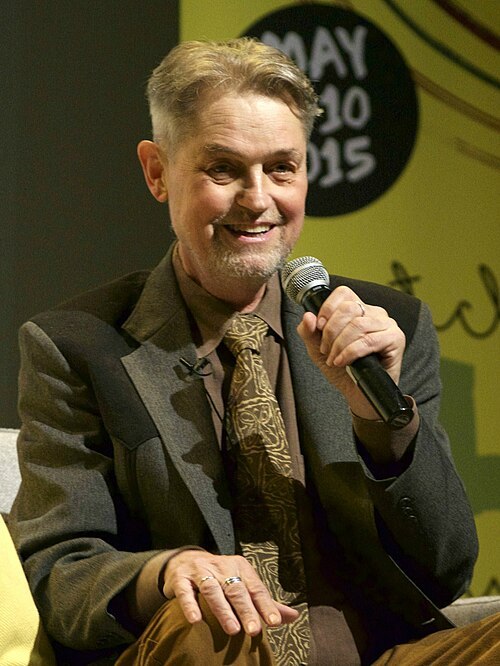
Image licensed under CC BY 2.0? by Photo by “Dan D'Errico / Montclair Film Festival”
26th April 2014 🗓️ : Death - Paul Robeson Jr. Paul Robeson, Jr., American historian and author (b. 1927) "Paul Leroy Robeson Jr. (November 2, 1927 – April 26, 2014) was an American author, archivist and historian...."
26th April 1973 🗓️ : Birth - Chris Perry (English footballer) Chris Perry, English footballer "Christopher John Perry (born 26 April 1973) is an English football coach, former footballer and pundit. As a player, he was a defender who notably played in the Premier League for Wimbledon, Tottenham Hotspur and Charlton Athletic, as well as in the Football League for West Bromwich Albion, Luton..."
26th April 1924 🗓️ : Birth - Browning Ross Browning Ross, American runner and soldier (d. 1998) "Harris Browning 'Brownie' Ross (April 26, 1924 – April 27, 1998) is often referred to as the father of long-distance running in the United States...."
26th April 1822 🗓️ : Birth - Frederick Law Olmsted Frederick Law Olmsted, American journalist and designer, co-designed Central Park (d. 1903) "Frederick Law Olmsted (April 26, 1822 – August 28, 1903) was an American landscape architect, journalist, social critic, and public administrator. He is considered to be the father of landscape architecture in the United States. Olmsted was famous for co-designing many well-known urban parks with..."

Image by James Notman, Boston; engraving of image later published in Century Magazine (source)
26th April 🗓️ : Holiday - Christian feast day: Riquier "Richarius (French: Riquier; c. 560 – April 26, 645) was a Frankish hermit, monk, and the founder of two monasteries. He is venerated as a saint in the Roman Catholic Church, and Eastern Orthodox Church. ..."

Image licensed under CC BY-SA 4.0? by Jacques Rocquet
0 notes
Text
A Timeline of Backyard Design Trends
Many countries and cultures can lay claim to the origin story outdoor design. The history of landscaping traced to the Hanging Gardens of Babylon, located in modern-day Iraq. More than 550 years later Egyptian, Greek, and Persian gardening techniques influenced the Roman gardens which gave way to future American landscaping trends and the “Father of American Landscape Architecture,” Frederick Law Olmsted. Let’s take a look back at 100 years of history through a timeline of backyard design trends in America. 1920s Greenery and the glory of nature can sum up the 1920s trends. The humble hobby of birdwatching inspired homeowners to plant perennials, plants, and trees with berries as well as install bird feeders, birdhouses, and birdbaths. Rock gardens and fish ponds were also popular. Homes had wide front porches and motion-featured outdoor furniture like rockers and swings to appreciate the natural scenery. Backyards served as private service areas for clotheslines and garbage cans. 1930s The Great Depression was the defining era of the decade. Landscaping luxuries were not an essential necessity. For the few that could afford it, large rose gardens, hydrangeas, and lilacs were popular plants. 1940s The Second World War drained supplies, and food shortages were common. President Roosevelt encouraged patriotic Americans to grow “Victory Gardens”, and the people planted vegetables, fruit, and herbs at home and in public parks. 1950s The G.I. Bill boom paved the way for soldiers in the suburbs and signature evergreens, green lawns for garden gnomes, plastic pink flamingos, and other outdoor ornaments. Although there was limited space for landscaping, over-sized, color-blasted roses and boxed hedges were a big trend. Manicured and maintained front lawns were the symbol of suburbia, and backyards transformed into a social space complete with patios, porches, dining sets and grills 1960s People of the sixties lavished in lush green lawns, landscapes, and absolute luxury. Beautiful garden beds, decks, pools, and patios represented prosperity. People loved picnics, playing games, and backyard barbeques. 1970s Large gardens were not easily accessible to all homeowners, but people found a way to do more with less. Landscapes leaned towards fruit-bearing shrubs and trees, as well as vegetable and herb gardens. native plants were favored over niche, novelty grasses. 1980s The 80s was the era of herbaceous boundaries and hard landscaping. Gardens starting to shrink in size. Seed, sod, and shrubs allowed homeowners to customize complex and elaborate exterior designs. 1990s The nineties were all about built-in brick barbeques, garden gazebos, and running water features. York stone and pebbles were popular, along with simple twig-burning garden fires. 2000s The increased popularity of home and garden design television shows in the early aughts ushered in the era of sophisticated backyard design. Inspired by professional designers, homeowners embraced contemporary simplified palettes, minimal materials, and bold colors. Exteriors extended the home outdoors and influenced landowners to mirror interior rooms. Outdoor kitchens, dining, and living rooms were especially popular as designs leaned toward multifunctional outdoor spaces. Zone areas allowed delineated design and separate segments for green areas and lounges. There were sections for herb and veggie gardens, flower meadows, perennial plants, and fire pits. Fire features with coordinating club chairs and cold weather outdoor accessories extend entertainment and enjoyment into the evening hours and for cooler climates. 2010s The trend towards separate patio spaces for outdoor dining and living rooms continued into the next decade. Function was favorable in the form of storage sheds and compost areas. Landscapes and lawns were full of green lush grass, stone walkways, and quiet sitting areas like loveseat benches under trees. Eastern influences included Japanese-inspired spa gardens and the best of best of modern technologies such as outdoor televisions and sound systems. 2020sCurrent landscaping trends consider climate change and aspire to maintain the natural environment. Sustainable gardens do not harm the habitat, invite in wildlife, and boost biodiversity. Environmentally-friendly furniture such as composite and polycarbonate resin are made of recyclable materials and appeal to the contemporary eco-conscious consumer. Ecological outdoor furniture tends to be organized in an organic way. Layouts like fireplaces and outdoor sofas are arranged to engage the ecosystem and enjoy the scenery. Locally sourced stones line lawns. The pandemic resulted in the resurgence of edible landscaping, and even renters are getting in on the curated green space. Bistro sets on balconies and petite patios are home to urban heirloom and container gardens for city dwellers in small spaces. Read the full article
0 notes
Text










Frederick Law Olmsted and the Public Park in America 1990
7 notes
·
View notes
Text
Secret Places in Philadelphia
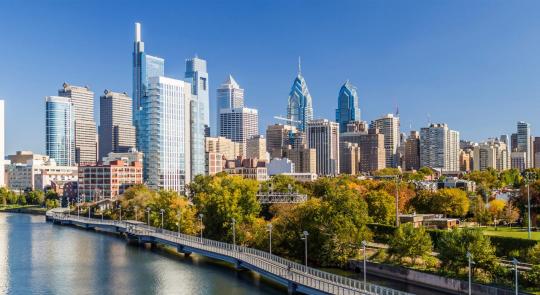
Philadelphia is a city that boasts a rich history and beautiful architecture. But did you know it also has some secret places that are only known to locals? I had the pleasure of visiting Philadelphia last year and discovered some amazing hidden gems while exploring this historic city. Here are my top 5 hidden places in Philadelphia:
Edgar Allan Poe's Grave
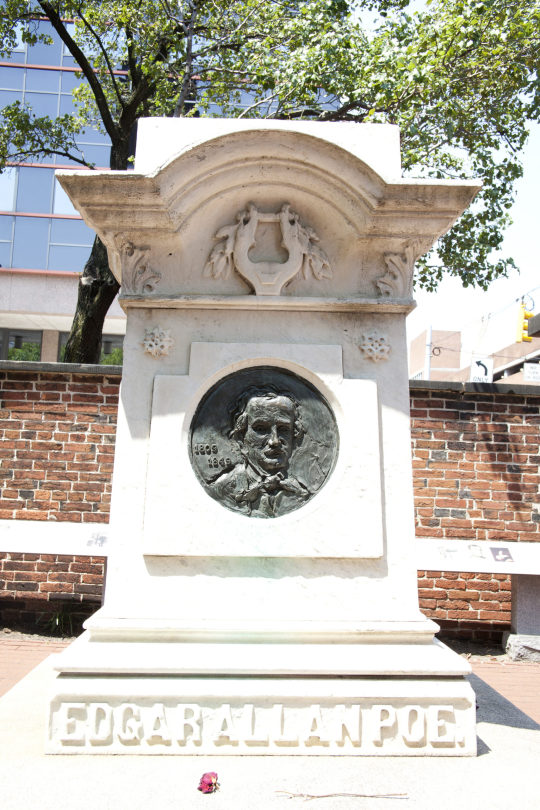
Edgar Allan Poe's grave is located in the Westminster Burying Ground in Philadelphia. It's a beautiful cemetery with many famous people buried there, such as John Barrymore and Joseph Bonaparte (Napoleon's brother).
It is best to visit Edgar Allan Poe's grave during the day so you can see it clearly. If you want to take pictures there, bring your phone charger because it will take a lot of pictures!
You should also bring some flowers for Edgar Allan Poe. He would love flowers on his birthday because he wrote poems about them before he died at 41 years old from a rabies infection that spread through his brain after getting bitten by a dog while traveling through Baltimore in October 1849.
The Magic Gardens
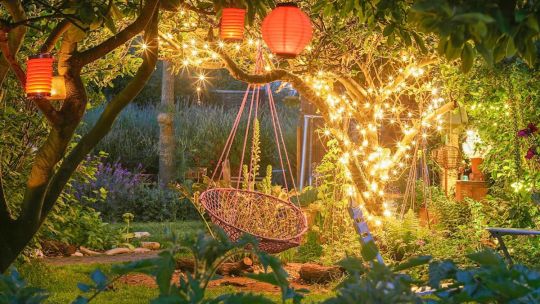
The Magic Gardens is an art installation by Isaiah Zagar in South Philadelphia. Zagar has been creating the Magic Gardens since the 1970s and it's a labyrinth of mosaics and murals that are constantly growing.
You can walk through it, sit down and have a picnic, or just take photos to share on Instagram—the choice is yours!
Eastern State Penitentiary
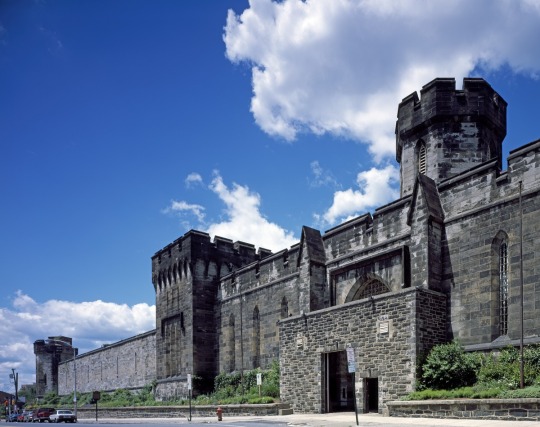
Eastern State Penitentiary is one of the most famous and well-known prisons in U.S. history, having been built in 1829 and closed in 1971. The prison was used to house some of America's most notorious criminals at the time, like Al Capone and "Slick" Willie Sutton. Today, it is a museum where visitors can take tours through the prison's dark hallways and see what life was like for prisoners there; however, Eastern State has also become known as one of Philadelphia's most haunted locations due to its eerie history and ghostly inhabitants.
If you're looking for a place to get away from it all but still be close enough to home base (Philadelphia), then you should consider visiting Eastern State Penitentiary when next visiting our city!
Franklin Square
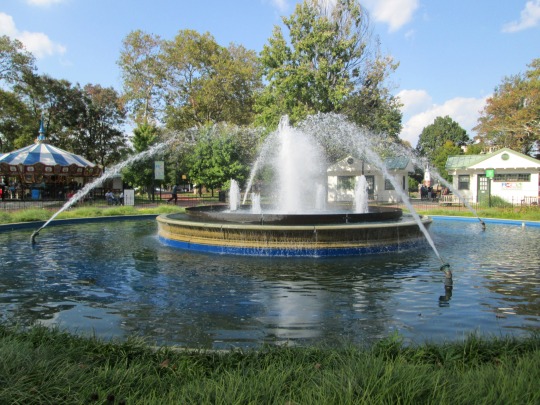
Franklin Square is a park in Center City Philadelphia, named after Benjamin Franklin. It was designed by William Penn, who also designed the city of Philadelphia itself. The square originally contained a potter's field (where bodies were buried under the ground), but it was turned into a park in 1820 and then redesigned by Frederick Law Olmsted in 1865. Today, you can find many statues of famous Philadelphians throughout Franklin Square—including one of Ben Franklin himself!
The Waterworks
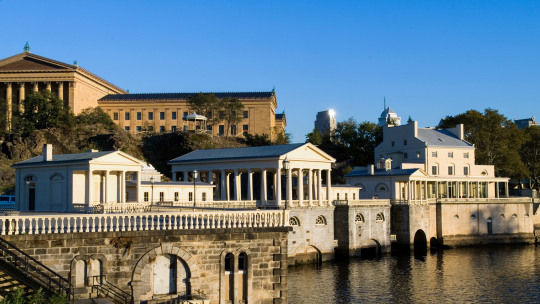
Located in Fairmount Park, this landmark is an ideal place to get away from the hustle of city life. The Waterworks was built in 1812 and since then has been used as a water treatment plant, restaurant, greenhouse, and museum. While you're there, make sure to check out the beautiful landscaping or have a picnic on one of their many outdoor tables. You could also take a stroll along Kelly Drive which is just across the road from The Waterworks.
Getting There: From downtown, Philadelphia takes I-76 east towards Valley Forge (I-76 becomes Route 30). Exit at Sedgley Road & turn right onto Sedgley Road for about 4 miles until you see signs for Fairmount Park on your left.
What To Do: Take advantage of all that Fairmount Park has to offer! You can rent bikes or kayaks at Boathouse Row or visit any number of museums.<!--
Magic Garden

The Magic Garden is a sculpture garden located in Fairmount Park. This unique attraction is open to the public, free of charge, and open year-round. The museum has been recognized by National Geographic as one of the most beautiful gardens in the world!
There are many different types of art throughout this garden including concrete animals, sculptures from recycled materials, and other interesting pieces such as an upside-down house made from discarded timbers from old buildings that were torn down in Philadelphia. You can check out their website for more information on visiting or donating!
Philadelphia has a lot more to offer than the Liberty Bell and Independence Hall.
There are tons of hidden gems in the city that you can visit.
Topiary - a park with topiary sculptures, located near 30th Street Station
Lemon Hill Mansion - a historic house built in 1799 on the highest point in Fairmount Park
Rodin Museum - all of Auguste Rodin's sculptures from his personal collection
Philadelphia Art Museum - which houses world-renowned paintings by Monet, Rembrandt, and Van Gogh
Reading Terminal Market - one of the largest markets in America with over 200 shops
There are many other businesses in the Philadelphia area.
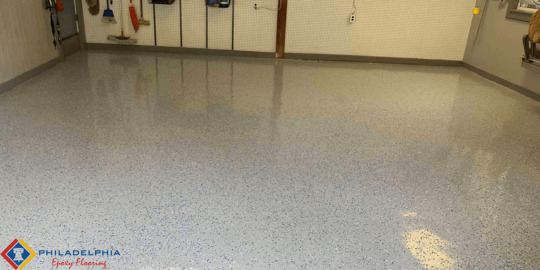
Residential epoxy flooring in Philadelphia is quickly becoming a popular option for interior floors, providing a durable and beautiful finish that can withstand high-traffic areas. For example, the epoxy flooring company Philadelphia Epoxy Flooring specializes in this type of flooring and has been in business since 1986. They are pros when it comes to commercial and residential projects big or small.
Philadelphia Epoxy Flooring
1625 W Oregon Ave, Philadelphia, PA 19145
(215) 500-2612
#epoxy flooring#garage epoxy flooring#garage floors#epoxy basement floor#epoxy floor coating#metallic epoxy floor#residential epoxy flooring#garage floor coating#epoxy concrete floor#commercial flooring
0 notes
Photo










Buffalo Industrial Bank Building
The Architecture of Buffalo, particularly the buildings constructed between the American Civil War and the Great Depression, is said to have created a new, distinctly American form of architecture and to have influenced design throughout the world.
Buffalo's original plan from the early 19th century was loosely based on Pierre Charles L'Enfant's 1791 plan for Washington, an Americanized version of Paris's system of radiating boulevards. Buffalo's radial street grid was designed by Joseph Ellicott and complemented by a system of parks and parkways designed by Frederick Law Olmsted. Buffalo was the first city for which Olmsted designed an interconnected park and parkway system rather than stand-alone parks.
During the Centennial Exposition of 1876 in Philadelphia, Pennsylvania, Frederick Law Olmsted declared Buffalo to be "the best planned city, as to its streets, public places, and grounds, in the United States, if not in the world."
According to The New York Times architecture writer Nicolai Ourousoff:
Buffalo was founded on a rich tradition of architectural experimentation. The architects who worked here were among the first to break with European traditions to create an aesthetic of their own, rooted in American ideals about individualism, commerce and social mobility.
The city contains buildings designed by American architecture masters like Frank Lloyd Wright, Louis Sullivan, and H.H. Richardson, making Buffalo one of the most architecturally significant cities in America. It also contains many buildings designed by modern architects including Minoru Yamasaki, Toshiko Mori, Marcel Breuer,and Harrison & Abramovitz.
Source: Wikipedia
#Buffalo Industrial Bank Building#art deco#facade#cityscape#detail#landmark#summer 2018#Court Street#bas-relief#downtown#vacation#travel#road trip#column#window#new york#usa#exterior#summer evening
4 notes
·
View notes
Photo





You're Moving To Boston
Boston is a city full of history, most of which is pretty common knowledge you learned about in elementary school. The University of Massachusetts campus at Columbia Point houses the John F. Kennedy Library The Boston Athenaeum (one of the oldest independent libraries in the United States), 70 Boston Children's Museum , Bull & Finch Pub (whose building is known from the television show Cheers ), Museum of Science , and the New England Aquarium are within the city.
Boston, located in Suffolk County , is the capital and largest city of the Commonwealth of Massachusetts in the United States The largest city in New England , Boston is considered the unofficial economic and cultural center of the entire New England region.
It was the scene of several key events of the American Revolution , such as the Boston Massacre , the Boston Tea Party , the Battle of Bunker Hill , and the Siege of Boston Upon U.S. independence from Great Britain , it continued to be an important port and manufacturing hub as well as a center for education and culture.
Because of the city's prominent role in the American Revolution , several historic sites relating to that period are preserved as part of the Boston National Historical Park Many are found along the Freedom Trail , which is marked by a red line or bricks embedded in the ground.
Parking in Boston is a full-contact sport, especially in the winter, and tickets, towing, "the boot," slashed tires, and fistfights over parking spaces are not uncommon, especially in the urban core neighborhoods of the North End, South End, South Boston, Back Bay, Financial District, Chinatown, Beacon Hill, and Charlestown.
To the east lies Boston Harbor and the Boston Harbor Islands National Recreation Area The Neponset River forms the boundary between Boston's southern neighborhoods and the city of Quincy and the town of Milton The Mystic River separates Charlestown from Chelsea and Everett, while Chelsea Creek and Boston Harbor separate East Boston from Boston proper.
The city and surrounding communities, including Cambridge and Newton, are home to Harvard University, the Massachusetts Institute of Technology (MIT), Tufts University, Boston College, Boston University, Emerson College, Northeastern University and other higher-ed institutions, all connected by public transit.
Boston Common , located near the Financial District and Beacon Hill, is the oldest public park in the U.S. Along with the adjacent Boston Public Garden , it is part of the Emerald Necklace , a string of parks designed by Frederick Law Olmsted to encircle the city.
According to Smart Growth America — an advocacy group "for people who want to live and work in great neighborhoods" — wrote a report titled "Foot Traffic Ahead: Ranking Walkable Urbanism in America's Largest Metros" in conjunction with The George Washington University's Center for Real Estate & Urban Analysis that identifies the top 30 U.S. metropolitan areas WalkUPs and ranks them based on their current and future commercial real estate metrics.
I do think it's important to note that a car isn't necessary for most people, and that car ownership is troublesome and not worth the hassle if you can avoid it. definitely get into the realities, because I've definitely seen some delusional OP's around here believing that free street parking without a permit is easy breezy if you know the right tricks and secrets.
Boston is an intellectual, technological, and political center but has lost some important regional institutions, 75 including the loss to mergers and acquisitions of local financial institutions such as FleetBoston Financial , which was acquired by Charlotte -based Bank of America in 2004.
Most people moving here, especially Redditors, will want to live in the neighborhoods where all the action is. Those are the neighborhoods that suck to have a car in. If you want to live in a car-friendly suburb, Boston is probably not high on your list. Many Long Distance Moving Companies have seen a steady rise in people relocating to Boston.
Not only are there major employers in Boston, but they also attract high-tech industries to the city and surrounding region, including computer hardware and software companies as well as biotechnology companies like Millennium Pharmaceuticals , Merck & Co. , Millipore , Genzyme , and Biogen Idec According to a 2003 report by the Boston Redevelopment Authority, students enrolled in Boston's colleges and universities contribute $4.8 billion annually to the city's economy.
Four NCAA Division I members play in the city— Boston College , Boston University , Harvard University , and Northeastern University Of the four, only Boston College participates in college football at the highest level, the Football Bowl Subdivision Harvard participates in the second-highest level, the Football Championship Subdivision The Boston Cannons of the MLL play at Harvard Stadium.
238 ParkScore ranks city park systems by a formula that analyzes the city's median park size, park acres as percent of city area, the percent of residents within a half-mile of a park, spending of park services per resident, and the number of playgrounds per 10,000 residents.
According to a 2014 study by the Pew Research Center , 57% of the population of the city identified themselves as Christians , with 25% professing attendance at a variety of churches that could be considered Protestant , and 29% professing Roman Catholic beliefs.
3 notes
·
View notes
Text
In Photos: A walk through Frederick Law Olmsted’s Enduring Gift: America’s Public Parks - The New York Times
In Photos: A walk through Frederick Law Olmsted’s Enduring Gift: America’s Public Parks – The New York Times
“We want a ground to which people may easily go after their day’s work is done, and where they may stroll for an hour, seeing, hearing, and feeling nothing of the bustle and the jar of the streets, where they shall, in effect, find the city put far away from them.”In Photos: A walk through Frederick Law Olmsted’s Enduring Gift: America’s Public Parks – The New York Times
View On WordPress
#Architecture#Cemetery#Central Park#Fredrick Law Olmsted#Gardens#Heritage#Landscape#New York#Public Spaces
1 note
·
View note
Photo

Commentary: Town must reclaim historic open up place at Franklin Park
In 2008, when I was CEO of the Codman Square Overall health Center, I was approached by a Codman Square community team that experienced expended a decade cleaning up vacant loads. Boston Task Ministries (BPM) had been organizing the community in between Talbot Avenue and Norfolk Street, which ultimately resulted in the firm known as Talbot Norfolk Triangle Neighbors United.
BPM, led then and now by Paul Malkemes, experienced been fearful about the vacant lots full of trash and higher grass. He instructed me the story of how, through the summer of 1998, he and his spouse Glenna watched as a neighborhood boy or girl still left a great deal bleeding just after falling into a broken house window that had been discarded there.
This incident led to a neighborhood cleanse-up, and a 10-12 months process by the community to assemble the lots and then elevate $400,000 to make the properties tons into a park, now regarded as Elmhurst Park.
It’s a exceptional story, other than that in 2008, Mayor Tom Menino and the Boston Parks Department refused to take the new park even with it currently being 1 of very couple of playgrounds in an location with countless numbers of young children and a lot of minimal-cash flow families. Bottom line: The Parks Department did not want the duty of protecting the new park.
BPM then approached me as head of the wellness centre to ask that the center choose on ultimate duty for park upkeep ought to the neighborhood group fail to do so. I signed the arrangement, but it was avoidable. BPM and Neighbors United have managed the park, planted trees (they and the Codman Square Community Development Corporation have planted and maintained around 100 of them in their neighborhood), and have been excellent stewards of the property.
I tell this tale for the reason that just getting the grass minimize in a Boston park, or having a useless tree eliminated, can be a difficult method today. It was not normally so.
The metropolis was the home of America’s greatest landscape architect, Frederick Law Olmsted, and Boston, with its Emerald Necklace, was a preeminent town for parks throughout its golden period in the late 19th century.
But factors transformed, and for decades, Boston has been dismal at making sure that all its communities have access to premier parks, open spaces, and trees. With the exception of the Olmsted parks, Boston generally does a lousy task of holding up its neighborhood general public areas. They and the city’s over-all tree canopy do not appear to be to have a substantial priority in how Boston sights development and preparing.
In reality, housing development frequently success in the elimination of mature shade trees. In Charlestown, the city is apparently allowing 340 mature shade trees to be slash down for the Bunker Hill Housing redevelopment. By 1 count, this is 10 percent of all the shade trees in Charlestown.
Other metropolitan areas, these as Portland, Oregon, call for permits to get rid of trees, and its rigorous needs contact for replacing trees.
As a outcome of its weak stewardship of trees, Boston has experienced its tree canopy reduced to 27 % from 29 % over the previous 12 yrs.
Trees are an critical component of world warming mitigation. In addition to eliminating carbon dioxide from the environment, they reduce heat islands from producing in dense urban places.
Boston’s inhabitants has elevated by 20 per cent (some 100,000 people) in the past 20 several years, however it seems that every developable parcel in Boston is allocated for industrial or residential development, fairly than for open up house for the citizens of ever more crowded neighborhoods.
That would make the fight above what will take place to the land occupied by the Shattuck Medical center vital. The medical center sits on 13 acres that was after a meadow at the edge of Franklin Park. Boston ceded the land to the Commonwealth in 1949 for use as a community health and fitness medical center, but that occupation is coming to a shut. In 2019, the Division of Well being and Human Services (DHHS) declared that Shattuck’s medical center features will be transferred to a hospital setting up previously owned by Boston Health care Center in the South Conclusion.
The Shattuck making is scheduled to be demolished, but instead of restoring that area to parkland, the state is contacting for the property to be turned into housing and social services supported by an array of human service businesses.
The Emerald Necklace Conservancy, in collaboration with Northeastern University, has analyzed opportunity options for these solutions, and decided that a nearby 18-acre parcel, the MBTA’s Arborway Garden Bus Facility, is massive ample to accommodate each the social company requires and the MBTA’s desires whilst finding the providers across the street from Forest Hills Station.
Regrettably, this has turned into a street struggle between human provider advocates and environmental activists. Through an April 13 hearing, about 50 % of the speakers, like previous Governors Mike Dukakis and Bill Weld, stated they felt the Arborway Yards website would be the ideal place for the supportive housing and companies and they were being strongly in favor of restoring the land as element of the Franklin Park the other 50 % spoke in assist of the state’s system.
As a human being who has expended my lifestyle in human companies, I understand and agree that we will need much more of them. But presenting the circumstance as if people solutions have to be on parkland is absurd. This is not either/or it is both/and.
Initially off, a selection is not urgent. The healthcare facility will not be demolished for 2 or 3 many years, so there is lots of time to approach the place wanted for providers or uncover other spots if the bus lawn is inadequate.
Next, it’s not an economic problem. The condition is working these a enormous surplus, upwards of $4 billion this 12 months, that Gov. Baker is willing to forgo $900 million in income tax profits.
This is a uncommon chance to restore 13 acres to Boston’s parks house in an location that is adjacent to spots that desperately will need a lot more usable parkland — Mattapan, Roxbury, Dorchester, and Forest Hills.
The MBTA paperwork will of system, say that the company simply cannot possibly cede land for human products and services, but they will if Gov. Baker tells it to do so.
He ought to sign up for his two predecessors who are advocating for restoring Olmsted’s meadow.
In addition, metropolis and state officers and mayoral candidates ought to weigh in on this problem. Call them right now. It would be a nice birthday present to Frederick Law Olmsted, whose 200th will be celebrated on April 26, 2022.
Monthly bill Walczak is a Dorchester resident. His column seems frequently in the Reporter.
window.fbAsyncInit = operate() FB.init( appId: "270847243020841", standing: correct, cookie: accurate, xfbml: legitimate, oauth : true, channelUrl: "https://www.dotnews.com/fb_social/channel" )
FB.Party.subscribe("edge.produce", purpose(href, widget) _gaq.press(["_trackEvent", "Facebook like", "Drupal", href]) )
(function() var e = doc.createElement('script') e.async = accurate e.src = document.locale.protocol + '//link.fb.internet/en_US/all.js' doc.getElementById('fb-root').appendChild(e) ())
0 notes
Photo


David Strathairn Appreciation:
Frederick Law Olmsted and the Public Park in America
#david strathairn#frederick law olmsted#frederick law olmsted and the public park in america#david strathairn appreciation#my gifs#my david gifs
8 notes
·
View notes
Photo

Gilded Age New Rochelle estate owned by yachtsman, African tribal king, on the market for $18.9M
There's a reason it's called “All View.”
A historic property on New Rochelle's Premium Point, built by Gilded Age banker Charles Oliver Iselin, was spared no expense when it was constructed in 1890.
Iselin was known as one of the most famous yachtsman of the time, a five-time defender of the America's cup. He built a breakwater in the Long Island Sound so that he could safely dock his yachts including The Vigilant, Defender, and Columbia, next to his home, in Echo Bay.
All View was built with the finest materials available, including rare onyx, parquet floors finished in ebony and rose-colored Belgian bricks.
The estate is currently on the market for $18,950,000. It's listed by Halstead agent Louise Phillips Forbes.
After falling on hard times after the departure of a subsequent owner, an African tribal king turned billionaire, All View today retains every bit of its original grandeur but has been brought up to modern speed via a top-to-bottom restoration by its current owners, a family with three young children.
The spaces are grand by design, with high coffered ceilings and intricate moldings, but the interior design cues make each feel inviting for a family with active young children. A seating area just off the second floor foyer, for example, sports a teepee and comfy couches ideal for reading. Off a formal first floor reception area, there's a mudroom filled with kids cubbies, scooters and book bags.
"It feels like a house that a family could live in," says Forbes.
You reach All View at the very end of a charming, narrow lane that winds through Premium Point, a private gated neighborhood of 32 homes. The Point has been home to artist Norman Rockwell, J.P. Morgan, and Charles Revson, the founder of Revlon; former Yankees coach Joe Torre rented a property here.
Since All View was built on a promontory, there are views from every inch of the three acre property. Outdoors, there is hardly a sound, except for lapping waves, birds chirping and the occasional whine of an outboard motor.
"There is an intimacy to this house," says Forbes. "I have been there with over a hundred people and it lives and entertains so nicely. It is so alive and that's the way it was meant to be lived in and enjoyed."
Imagine the parties
In its heyday as a mecca for the Gilded Age yachting set, guests entered All View through a impressive, 600-pound paneled doorway, still in pride of place today, all its intricate hardware intact.
It's not hard to imagine the grand parties that began in the marble foyer, swept up a grand staircase, into a wood paneled library and then onto a series of public rooms that front onto a waterfront terrace.
The grounds, originally conceived by Frederick Law Olmsted, the designer of Central Park, include a stunning dark gray mosaic tile pool, a private beach, boat dock, a badminton/mini-tennis/basketball court and two wisteria covered pergolas, perfect for summer dining.
The house had its highs and lows.
In the 1980s, it was owned by African billionaire/tribal king and diplomat, Antonio Deinde Fernandez and his wife, Aduke. The family hosted many dignitaries during their time in residence including South African President Nelson Mandela.
The couple reportedly brought in European artisans to repair or replicate many of the 1890s intricate plaster moldings and medallions in the home, and added some unique touches of their own.
Fernandez added two wings to each side of the original home, which now spreads over 23,000-square-feet. One contains the huge master suite; the other features a kitchen/family room surrounded by windows; above it is a kids playroom.
There are 13 bedrooms spread over three levels, 13 bathrooms, nine working wood-burning fireplaces, a cinema, wine cellar, billiard room, staff quarters, a sun porch the current owners use as a gym, three additional kitchens (chef’s, butler’s pantry, and staff), formal dining room, formal living room, family room, library, and six-car garage that is tricked out with lifts so that the family vehicles can be serviced onsite.
After Fernandez and Aduke divorced, the home was unoccupied for about a decade, then hit by Hurricane Sandy. Photos from the time show peeling paint and period details in need of repair. The current owners purchased the property in 2012 and set out to restore its many splendid details.
"There was no electricity, no plumbing, but they felt the history and the importance of this home," Forbes says. "Now everything has been touched; nothing has been overlooked. The owner was improving those little details that are going to be gifts for the next person."
Every door and window, for example, has custom hinges and hardware, many bearing Fernandes' tribal crest; then there are the window locks created as leopards and jaguars, as well as maps of the African continent on the handles. All have been restored.
After a top-to-bottom multi-year renovation, All View is now a stunning 21st century home with a 14-zone geothermal heating and cooling system, an oil-fired backup generator, a comprehensive wireless network throughout the home, and all new wiring.
More importantly, the couple reinforced the seawall which borders the entire upper and lower sections of the property with a steel reinforced concrete core ten feet deep and ten feet wide.
"It is a very unique property," says Forbes. "All View is a property that has a soul and that's what the owners realized when they first saw it."
(Source: Lohud)
1 note
·
View note
Text
READ BOOKS ONLINE FOR FREE AND NO DOWNLOADING
Spying on the South: Travels with Frederick Law Olmsted in a Fractured Land

How to download or read, follow the steps below :
1.Click The Button DOWNLOAD
2.DOWNLOAD as many books as your like (Personal use)
3.Join over 80.000 and happy reader
Read Online OR Download Now
Download Book Spying on the South: Travels with Frederick Law Olmsted in a Fractured Land
Read books online for free and no downloading Spying on the South: Travels with Frederick Law Olmsted in a Fractured Land by Tony Horwitz
Synopsis : Beloved best-selling author Tony Horwitz retraces Frederick Law Olmsted's epic journey across the American South in the 1850s, as he too searches for common ground in a dangerously riven nation.On the eve of the Civil War, an up-and-coming newspaper, the New York Times, sent a young travel writer to explore the South, which was alien territory to the Connecticut Yankee correspondent and to his Northern readers. Identified in the paper as "Yeoman," to protect his identity, the writer roamed eleven states and six thousand miles, jolting the nation with his dispatches about slavery and the extremism of its defenders.This extraordinary journey would also re-shape the nation's landscape, driving "Yeoman"--real name Frederick Law Olmsted--to embark on his career as America's first and foremost architect of urban parks and other public spaces.Over a century and half later, there are echoes of the pre-Civil War in the angry ferment and fracturing of our own time. Is America still oneReading Download Pdf Epub read
0 notes
Text










Frederick Law Olmsted and the Public Park in America 1990
4 notes
·
View notes
Photo


A grove of American elm trees in Central Park's Mall, New York City, USA © AWL Images/Danita Delimont
*
Featured on Bing November 25, 2020
A dying breed of tree thrives in an American park Today we’re standing in what is commonly known by American’s as the Mall of New York City’s Central Park. When architect’s Frederick Law Olmstead and Calvert Vaux designed this 400-metre walkway, they were inspired by Europe’s public spaces. They envisioned a 'grand promenade' where people of all backgrounds, from the city’s monied elite to those of lesser status, could come together and mingle.
Today, the Mall remains one of Central Park’s most popular and iconic features. Olmstead designed the pedestrian walkway to be the only straight path in all the park. Lining the path on either side is a majestic canopy made from hundreds of American elms. Chances are, you’ve seen an Elm Street in an American town or two. These majestic trees once populated many parts of the country but were devastated by Dutch elm disease beginning in the 1930s. The trees here in the Mall make up one of the oldest living stands of American elms in North America. They stand today, not only alive, but thriving, thanks to dedicated Central Park arborists who monitor and protect them. When a tree must be removed - in a bad year, the park can lose up to 35 - a new one is planted in its place.
*
Today on Bing November 25, 2020
A dying breed of tree thrives in an American park We're standing in the Mall of New York City’s Central Park, in the middle of fall foliage season. When Frederick Law Olmstead and Calvert Vaux designed this quarter-mile walkway, they were inspired by Europe’s public spaces. They envisioned a 'grand promenade' where people of all backgrounds, from the city’s monied elite to those of lesser status, could come together and mingle.
Today, the Mall remains one of Central Park’s most popular and iconic features. Olmstead designed the pedestrian walkway to be the only straight path in all the park. Lining the path on either side is a majestic canopy made from hundreds of American elms. Chances are, you’ve seen an Elm Street in an American town or two. These majestic trees once populated many parts of the country but were devastated by Dutch elm disease beginning in the 1930s. The trees here in the Mall make up one of the oldest living stands of American elms in North America. They stand today, not only alive, but thriving, thanks to dedicated Central Park arborists who monitor and protect them. When a tree must be removed—in a bad year, the park can lose up to 35 trees—a new one is planted in its place.
*
Today on Bing November 25, 2020
A dying breed of tree thrives in an American park We're standing on the Mall of New York City's Central Park, in the middle of fall foliage season. When Frederick Law Olmsted and Calvert Vaux designed this quarter-mile walkway, they were inspired by Europe's public spaces. They envisioned a 'grand promenade' where people of all backgrounds, from the city's monied elite to those of lesser status, could come together and mingle.
Today, the Mall remains one of Central Park's most popular and iconic features. Olmsted designed the pedestrian walkway to be the only straight path in all the park. Lining the path on either side is a majestic canopy made from hundreds of American elms. Chances are, you've seen an Elm Street in an American town or two. These stately trees with gracefully spreading branches once populated many parts of the country, but were devastated by Dutch elm disease beginning in the 1930s. The trees here flanking the Mall make up one of the oldest living stands of American elms in North America. They stand today, not only alive but thriving, thanks to dedicated Central Park arborists who monitor and protect them. When a tree must be removed—in a bad year, the park can lose up to 35 trees—a new one is planted in its place.
0 notes
Text
9 Easy Weekend Getaways on the East Coast

In the canicule of summer, nothing is more refreshing—and rejuvenating—than a fast weekend trip. While that's definitely harder to try to to this year, there are a couple of secluded options on the East Coast for those eager to jump within the car and absorb some new scenery. (We're sure able to ditch our own four walls, too!) Whether you would like a quiet island in Georgia or an alpine escape in Vermont, these are the foremost gorgeous getaways beyond the doorstep. And for more safe travels, inspect the 13 Underrated Places That Americans Are Allowed to go to Now.
Editor's Note: We understand that travel is complicated immediately and restrictions vary state to state. If you propose on visiting any of the destinations or attractions below, which were open at the time of publication, we recommend double-checking their official websites for limited access announcements and general safety guidelines.
1New Hope, Pennsylvania
Nestled in Delaware, this quaint hamlet may be a hodgepodge of history. Established within the 1700s, New Hope quickly became a thriving mill town and layby between Philadelphia and NY City. Main Street still reflects this old-school charm with its 19th-century stone storefronts, watering holes, and galleries. and therefore the eponymous mill—now transformed into the Bucks County Playhouse for performing arts—is a nod to the enclave's treasured past. While here, walk along the promenade and swing by The Salt House, a 270-year-old tavern, for a pint, or snag a seat on the waterfront patio at Nektar bar to tuck into Mediterranean-inspired tapas and charcuterie boards. And if you are looking for an adventure, consider a tubing trip down the river or hop aboard a vintage train on the New Hope Railroad, which chugs through the bucolic countryside.
2Kennebunkport, Maine
Kennebunkport has all the trimmings of a quintessential New England escape. The Maine town is home to fresh lobster shacks, former sea captains' mansions, and kooky lighthouses dotting its craggy coastline. Wander through Dock Square, the central haunt where the Atlantic meets the Kennebunk River, and inspect the towering schooners within the wharf. For your own slice of paradise, look no further than The Cottages at Cabot Cove, a cluster of 16 shingle houses that appear like they're pulled from the pages of Coastal Living. The resort's manicured grounds are drenched hydrangeas, the lawn is about up for games of croquet, and there are beach cruiser bikes and kayaks available to explore the world. And for more coastal locales, inspect the 17 Best Secret Beach Towns in America.
3Shenandoah Valley, Virginia
Stretching 200 miles over the Blue Ridge Mountains Mountains, Shenandoah Valley is once among Virginia's most scenic locations. Its namesake park is legendary for the Skyline Drive that winds atop the spine of the range, and there are many natural wonders and magical caverns to get. However, the valley is additionally a thriving wine region, with verdant vineyards and tasting trails that might impress any oenophile. Pack a picnic and head to Shenandoah Vineyards, where you'll grab a wine flight from the Civil War-era barn turned tasting room.
4Saratoga Springs, New York
Just 40 miles north of Albany within the Adirondacks, Saratoga Springs was the premier resort destination for affluent New Yorkers throughout the late 19th century and early 20th century. In its heyday, the glamorous set came upstate to cheer on the thoroughbred horses at the racetrack, soak within the mineral baths fed by the area's natural springs, and socialize at Grand Union, the world's largest hotel at that point. Many of those pleasures are still available today, and you'll teleport yourself even more so by checking into the recently restored Adelphi Hotel. inbuilt 1877, the 32-room boutique stay is an emblem of Gilded Age elegance that overlooks the Victorian abodes along Broadway's downtown drag.
5The Berkshires, Massachusetts
Massachusetts could also be known for tony Boston or laid-back Cape Cod, but the Berkshires within the western side of the state may be a worthy destination too—and has fewer crowds. The region is comprised of 30 towns and two cities—North Adams and Pittsfield—and though its fall foliage and plush landscape may peg it as a natural escape, it's a surprisingly active creative community. The area's art scene boomed within the late 19th-century, drawing musicians, painters, and authors from the likes of Melville and Wharton. That legacy lives on at establishments like the Rockwell Museum, The Clark institute of art, and therefore the Massachusetts Museum of up to date Art (or MASS MoCA), the country's biggest contemporary museum. When you're able to hit the road, cruise down the 63-mile Mohawk Trail scenic byway, then drop your bags at Tourists. The rustic-chic woodland lodge has much room to roam, between its hiking paths, picnic spots, and saltwater pool. And for more stunning drives, These Are the simplest Road Trips in New England.
6Old Saybrook, Connecticut
One of the primary villages in Connecticut, Old Saybrook is straight out of a fairytale storybook. Beachfront antique shops, independent cafes, and Colonial homes decorated with patriotic American flags dot the most Street. Meanwhile, farther afield, Rocky Neck State Park and therefore the Great Island Wildlife Area offer a breath of fresh air, and therefore Connecticut is smooth enough to stand-up paddleboard or kayak as osprey, falcon, and sharp-shinned hawks soar overhead.
7Woodstock, Vermont
Full disclosure: this is often not the Woodstock that hosted the 1969 festival featuring Hendrix, Joplin, Joe Cocker, and other iconic rockers. This town is far more tranquil, hidden away within the sylvan slopes of Vermont. Here, it's all about the outside, whether you're hiking, skiing, or golfing. It also proudly displays its storied past: an ingenious 1818 Revere bell is often seen at the primary Congregational Church in town. The Woodstock Inn, a colonial estate that when belonged to the Rockefeller family, is that the ideal home base because it sits on the central green facing the covered wooden bridge within the heart of town. From here, it is easy to browse the gourmet stalls at the local market, pop into Simon Pearce's glassblowing studio, or see the animals at Billings Farm and Museum. And for more hidden gems, inspect the 33 Utterly Amazing Travel Destinations within the U.S. You've Never Heard Of.
8Asheville, North Carolina
Asheville may be a hidden gem sandwiched between the good Smoky Mountains and Blue Ridge Mountains Parkway. Its assets are that the Biltmore, a sprawling castle owned by George Vanderbilt and gardens designed by Frederick Law Olmsted, who was the landscape gardener behind Manhattan's Central Park. the town itself has attracted many movers and shakers, causing it to blossom into a verified food destination and craft beer hub. Asheville native and el Bulli-trained chef Katie Button is at the forefront of this culinary crusade, together with her Spanish tapas bar Cúrate. Swallow the meal down with some suds on the alfresco patio at Wicked Weed, one among the quite 20 top-notch breweries in town.
9Jekyll Island, Georgia
While most tourists flock to Tybee Island, a step from Savannah, there's an island on the southernmost tip of Georgia that's far more secluded. Jekyll Island may be a historic atoll just an hour from Jacksonville, Florida, where the nation's most well-heeled families retreated within the 19th century. Today, you'll enter their footsteps, taking within the oak-lined plantations, peaceful marshes, and driftwood-laden beaches. Don't miss the Georgia marine turtle Center to ascertain a number of the island's most precious inhabitants.
0 notes
Photo










Public Garden, Boston
The Public Garden, also known as Boston Public Garden, is a large park in the heart of Boston, Massachusetts, adjacent to Boston Common. It is a part of the Emerald Necklace system of parks, and is bounded by Charles Street and Boston Common to the east, Beacon Street to the north, Arlington Street and Back Bay to the west, and Boylston Street to the south. The Public Garden was the first public botanical garden in America.
Together with the Boston Common, the parks form the northern terminus of the Emerald Necklace, a long string of parks designed by Frederick Law Olmsted. While the Common is primarily unstructured open space, the Public Garden contains a pond and a large series of formal plantings that are maintained by the city and others and vary from season to season. Mostly flat and varying in elevation by less than five feet, the garden is designed in the style of an English landscape garden. A straight pathway, including a bridge that crosses over its pond, spans the two main entrances of Charles and Arlington streets; but its pathways are otherwise winding and asymmetrical.
The Public Garden is rectangular in shape and is bounded on the south by Boylston Street, on the west by Arlington Street, and on the north by Beacon Street where it faces Beacon Hill. On its east side, Charles Street divides the Public Garden from the Common. The greenway connecting the Public Garden with the rest of the Emerald Necklace is the strip of park that runs west down the center of Commonwealth Avenue towards the Back Bay Fens and the Muddy River.
During the warmer seasons, the 4 acres (16,000 m2) pond is the home of a great many ducks, as well as of one or more swans. A popular tourist attraction is the Swan Boats, which began operating in 1877. For a small fee, tourists can sit on a boat ornamented with a white swan at the rear. The boat is then pedaled around the pond by a tour guide sitting within the swan.
The current pair of swans are mute swans named Romeo and Juliet after the Shakespearian couple, however, it was found that both are female.
Being no more than three feet deep at its deepest point, the pond easily freezes during the colder months. In 1879, the Boston City Council passed an order to maintain the pond for skating during the winter;today, there is an official skating rink maintained at Frog Pond on the Common, instead.
The pond represented a significant health concern shortly after it was constructed, as it was fed by a combination of salt water from the Charles River, sewer water, and fresh water from Frog Pond in the Common. As a result, there was often a thick slime present in the pond, and an accompanying stench. Consequently, the caretakers of the garden drain and clean the pond annually.
Source: Wikipedia
#Public Garden#park#nature#lawn#tree#flowers#bird#landmark#tourist attraction#George Washington by Thomas Ball#pond#bridge#japanese garden lantern#toro#duckling#boston#massachusetts#summer 2018#travel#vacation#usa#road trip#animal#public art#architecture#cityscape#sculpture
4 notes
·
View notes